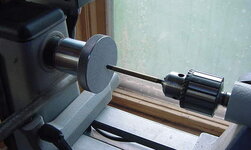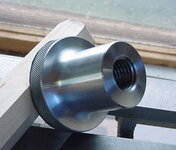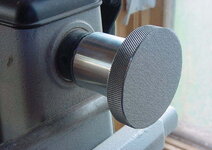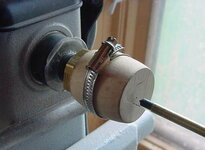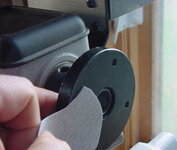wood-of-1kind
Member
First of all, allow me to say thanks to Jim Byron (JimB) for inspiring this style of squaring jig. My version is an all aluminum machined version that runs very true and easily accepts PSA (peel & stick abrasives). When you team this jig with the 'knock out' tool set (assorted shafts?:biggrin there is no pen kit that it will not handle. A 'simple' design but extremely handy when you want to square up your pen blanks. Quick to install and quick to remove with the 'knurled' grip. The last two(2) pixs are my original prototypes (wood and brass nut and a plain steel faceplate). Don't laugh they work, but not as good as the "allie" version.:wink:
there is no pen kit that it will not handle. A 'simple' design but extremely handy when you want to square up your pen blanks. Quick to install and quick to remove with the 'knurled' grip. The last two(2) pixs are my original prototypes (wood and brass nut and a plain steel faceplate). Don't laugh they work, but not as good as the "allie" version.:wink:
Attachments
Last edited:

